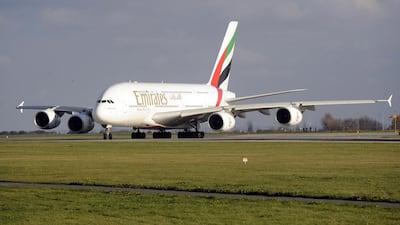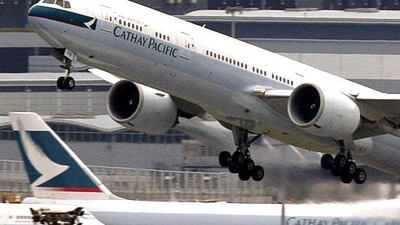Etihad Airways, awarded by Skytrax as the seventh best airline last year, has withdrawn from the aviation industry’s biggest awards scheme. Here are the world’s 10 best airlines for 2013, as rated by Skytrax.
MORE ON CORONAVIRUS
Editorial: Coronavirus-stricken communities need solidarity
Dominic Jermey: How epidemics like coronavirus can be caused by the illegal wildlife trade
Sholto Byrnes: Fake news about coronavirus is infecting the world
UPI facts
More than 2.2 million Indian tourists arrived in UAE in 2023
More than 3.5 million Indians reside in UAE
Indian tourists can make purchases in UAE using rupee accounts in India through QR-code-based UPI real-time payment systems
Indian residents in UAE can use their non-resident NRO and NRE accounts held in Indian banks linked to a UAE mobile number for UPI transactions
The specs
AT4 Ultimate, as tested
Engine: 6.2-litre V8
Power: 420hp
Torque: 623Nm
Transmission: 10-speed automatic
Price: From Dh330,800 (Elevation: Dh236,400; AT4: Dh286,800; Denali: Dh345,800)
On sale: Now
Recommended
Women are on the front line of the coronavirus fight, and we should all remember that by Phumzile Mlambo-Ngcuka
Coronavirus: How the world can end the pandemic by Bill Gates
Famine on the rise in the Middle East and North Africa
Inside the UN's Dubai aid facility delivering support to people in need across the globe
Results:
Men's 100m T34: 1. Walid Ktila (TUN) 15 sec; 2. Rheed McCracken (AUS) 15.40; 3. Mohammed Al Hammadi (UAE) 15.75. Men's 400m T34: 1. Walid Ktila (TUN) 50.56; 2. Mohammed Al Hammadi (UAE) 50.94; 3. Henry Manni (FIN) 52.24.
Who is Tim-Berners Lee?
Sir Tim Berners-Lee was born in London in a household of mathematicians and computer scientists. Both his mother, Mary Lee, and father, Conway, were early computer scientists who worked on the Ferranti 1 - the world's first commercially-available, general purpose digital computer. Sir Tim studied Physics at the University of Oxford and held a series of roles developing code and building software before moving to Switzerland to work for Cern, the European Particle Physics laboratory. He developed the worldwide web code as a side project in 1989 as a global information-sharing system. After releasing the first web code in 1991, Cern made it open and free for all to use. Sir Tim now campaigns for initiatives to make sure the web remains open and accessible to all.










